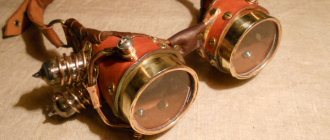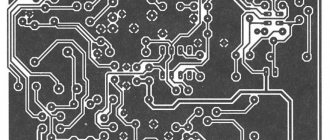Photomultiplier tubes FEU-65 and FEU-200.
I have a special weakness for photomultipliers and have a half-serious intention to collect them all, fortunately the nomenclature like FEU-XXX, where XXX is the number, makes it easy to remember which are in the collection and which are not yet. Among them there are some quite large specimens, tens of centimeters in size, such as FEU-50. But this black-and-green barrel, FEU-65, exceeded all my expectations, being the length of a two-liter bottle of Coca-Cola and weighing several kilograms, with a strikingly beautiful spherical photocathode and a blurry stenciled inscription - the number, plant logo and production date. Its competitor, the FEU-200, has a photocathode of approximately the same size, but without a spherical mirror, and is designed in the form of a cone with open dynodes.
Electro-optical converter PIM-103V
Donated by a good person to SilverRay, completely new and with a passport for the PIM-103V image intensifier tube, used for recording picosecond duration of processes. Unfortunately, the chances that I will ever bother with turning it on correctly are close to zero. If anyone needs a full passport, you can email me/jabber.
Powerful high-voltage kenotron VI1-40/45
The only lamp I have, which even if I wanted to, I couldn’t hold at arm’s length due to its weight. The heavy ribbed anode dissipates the excess power released when this stupid lamp rectifies its forty kilovolts and forty-five amperes (one and a half megawatts, however!). The conclusions seem to hint at the currents flowing through them.
Mercury thyratron TR1-40/15
This is not the largest existing mercury thyratron, the second largest after TR1-85/15. It is 60 centimeters long and is capable of rectifying, respectively, 40 amperes at 15 kilovolts, while consuming only 30 amperes for its filament (at a filament voltage of 5 volts). It is very similar to its cousin, the VG-163 gastron, which I have long wanted to have, but have not yet succeeded.
But this is a really big CRT.
no images were found
There are no identification marks, but the size is truly impressive. It resembles a radar tube in size and appearance, with the difference being the absence of a central pin on the screen.
no images were found
Huge seven-segment VFD ILC1-1/7
The ILC1-1/7 vacuum luminescent indicator is the largest seven-segment luminescent indicator produced in the USSR. Ideal for making huge and beautiful watches. It is approximately the size of a palm.
Pulse modulator tetrode GMI-90.
The object of my long-time desires, a two-liter jar with electrodes and a bizarrely shaped anode in the shape of a cube, inside of which live a parallelepipedal-shaped grid and a cathode. The lamp is 1991, new, although it was received without a passport. Can pass 40 amperes per pulse (duration 3 μs) at an anode voltage of 33 kV. Full passport data is available by typing the name of the lamp into Google.
no images were found
Vacuum variable capacitor KP1-4 20-1000 pF 10 kV
One of the largest domestic vacuum capacitors. Vacuum capacitors have been commonly used in radio stations and radar technology, since the almost complete absence of losses in such a capacitor (vacuum as a dielectric) allows for enormous reactive powers. Such a capacitor is ideal for fine tuning the resonance of a powerful Tesla lamp coil, for which it is usually used by high-voltage workers. The drive for changing the capacity is made through a copper bellows. On the surface of the plates, numerous stains are visible from breakdowns that occurred between the plates, which do not in any way affect the performance.
no images were found
High-voltage diode, also known as kenotron, KR-220.
A meter long fool, X-ray kenotron, airborne, 220 kilovolts. Four of these are a complete bridge for straightening the X-ray transformer, you can power a powerful X-ray lamp. However, they themselves can begin to emit X-rays if they are not near the cathode. Someday I'll get three more of these, combine them with a 140 kV pole-shaped transformer standing in the middle of the room, and have fun with the pimples named after Grandfather Roentgen. Due to lack of space, it is also suspended from the ceiling.
Giant VLI (VFD) - vacuum phosphor indicators
Vacuum phosphor indicators are one of the brightest types of display today. Usually they are small in size, a few “pixels” of a complex shape (some kind of schematic picture, or, for example, a seven-segment indicator, as in old calculators or watches). But here we have a full-size pixel display with a resolution of approximately 300*300 pixels, and the size of almost two palms. Connecting it to display anything is unrealistic: there are too many pins. But the very fact of the existence of such a miracle of engineering inspires Soviet engineers.
The second copy, designed for character strings, is twice as large in area. Particularly interesting are the connections to the terminals, sprayed directly onto the glass.










